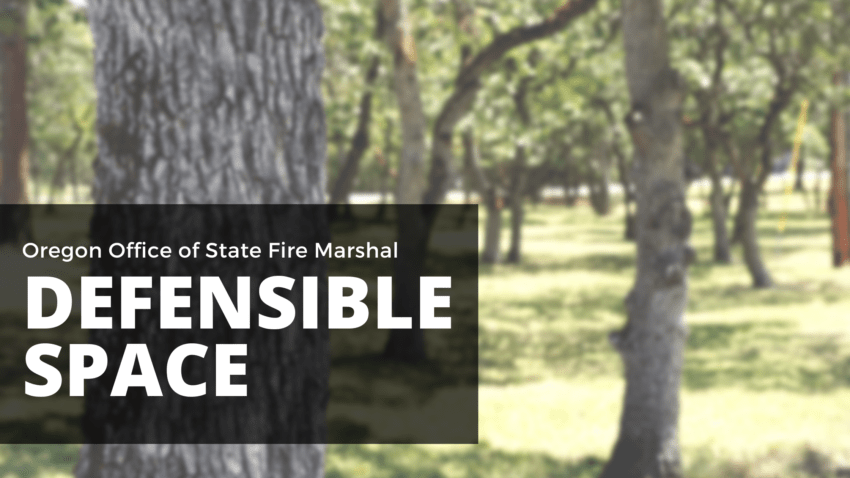With the recent release of the wildfire risk map, created by Oregon State University and the Oregon Department of Forestry, defensible space is top of mind for many Oregonians.
No matter where your home is located, there are easy steps you can take to protect yourself against wildfire risk.
This is where defensible space comes in.
What defensible space is
Defensible space is the buffer you create between your home or business and the grass, trees, shrubs, or any wildland area surrounding it. Proper defensible space can slow or stop the spread of wildfire and help protect your home or business.
Well-maintained defensible space can increase your home’s chance of survival by 75%.
Where do I start when creating defensible space?
We recommend breaking it up into small weekend projects in the spring, fall, and winter.
First, start at your home and work out from there. Remove combustible materials like dry leaves and pine needles from your roof, gutters, and eaves.
Next, move to the foundation of your home and make sure combustible landscaping like bark dust or mulch is not touching your home. Consider replacing combustible landscaping with bare dirt, gravel, or pavers.
Next, trim and limb bushes and trees, so they are not touching your home. This does not mean you need to remove all the plants from your yard. Instead, give plants some space from one another. Consider removing tall brush from under trees and some of the lower limbs so fire on the ground cannot get into the tree canopy.
Continue moving outward from your home to give added protection from wildfire.
Your defensible space plan also does not have to encompass multiple acres of work. Instead, focus on the immediate area around your home to give it the best chance of surviving a wildfire.
Tackle these projects one at a time. In small increments, a defensible space plan can come together.
Helpful Documents
